- Home
- AI Images
From Words to Wonders: Exploring AI That Can Create Images
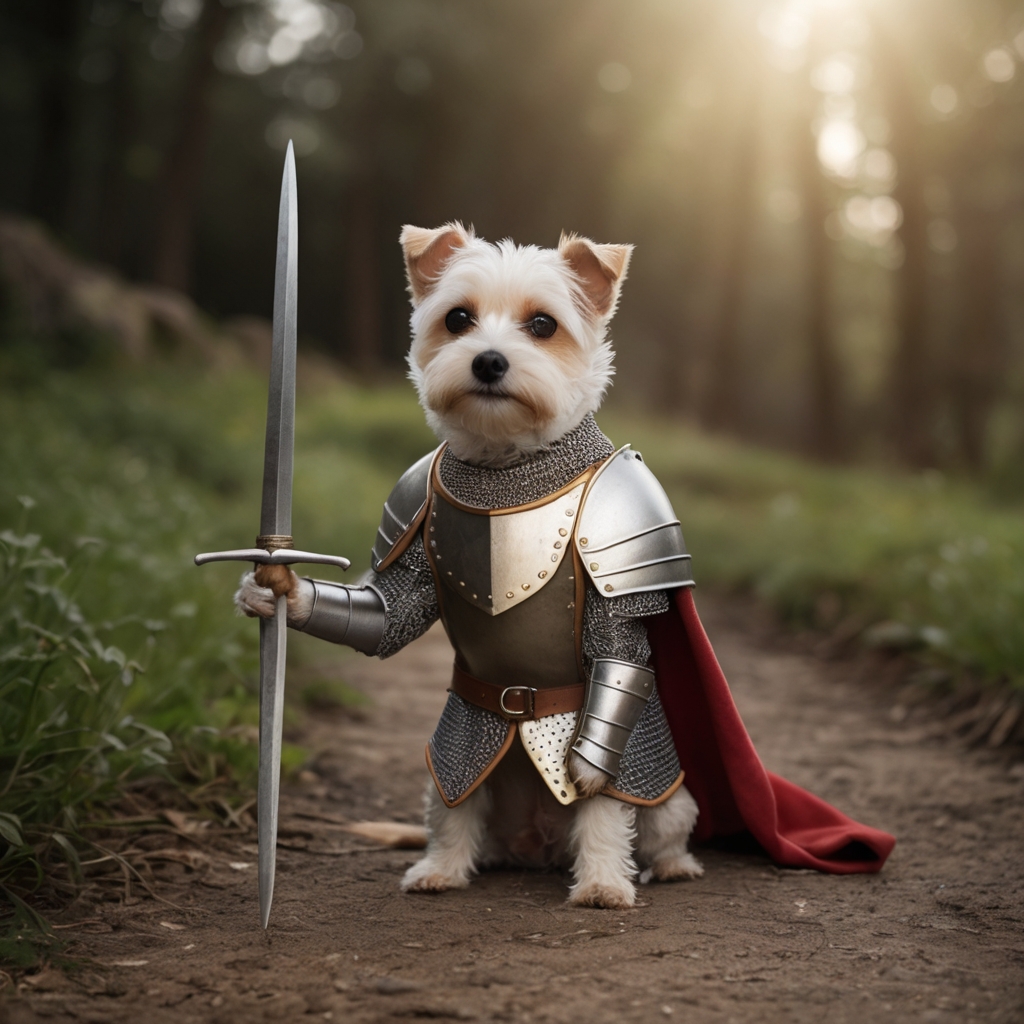 A dog dressed as a medieval knight by Leonardo AI
A dog dressed as a medieval knight by Leonardo AILet’s be honest—if someone told you 10 years ago that computers could paint realistic portraits, generate anime characters, or whip up a fantasy castle faster than you can find your charger, you’d probably think they were watching too much sci-fi. But here we are in the age of AI that can create images, and it's not just real—it's ridiculously cool.
Whether you’re a student, a hobbyist, a content creator, or someone who just wants a robot to illustrate your dog dressed as a medieval knight (no judgment), this guide will break it all down for you in simple, fun language. Let’s explore how this magic works, how you can use it, and what makes AI image generation the artistic superpower of the digital age.
So… What Is AI That Can Create Images?
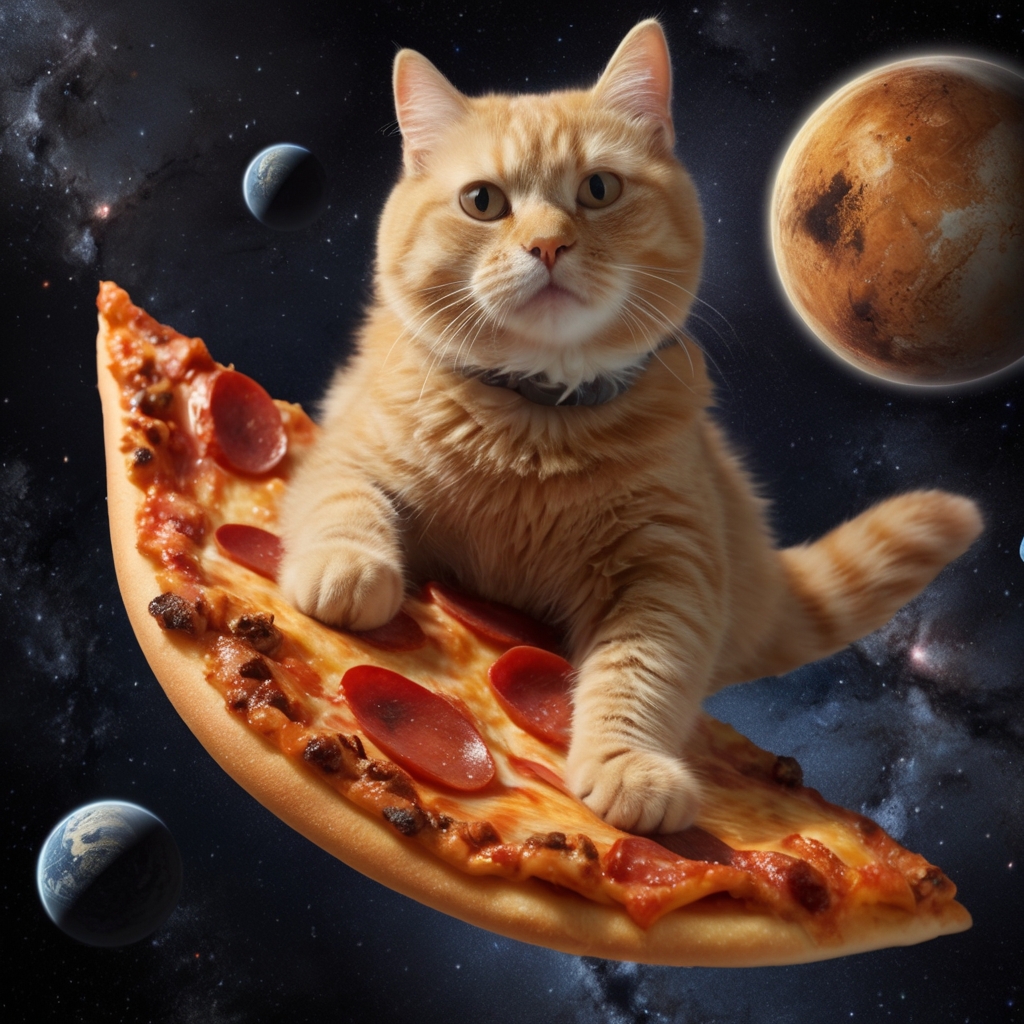 A cat surfing on a pizza in space by Leonardo AI
A cat surfing on a pizza in space by Leonardo AIIn plain English, AI image generation is when a computer uses artificial intelligence—specifically machine learning—to produce pictures based on what you tell it. You give it a prompt (like “a cat surfing on a slice of pizza in space”), and boom—it generates a visual representation of that idea.
These tools aren’t copying and pasting clipart. They’re generating images from scratch using deep learning models trained on millions (sometimes billions) of real images and art styles from the internet. It’s kind of like teaching a robot to be an artist.
How Does AI Image Generation Actually Work?
Let’s break down the nerdy bits (don’t worry, no degree in data science required):
1. Training the AI
Think of this like art school for algorithms. AI models are fed enormous datasets of pictures and learn what different things look like: dogs, sunsets, people, trees, spaghetti, you name it. Along with the images, they’re often trained using captions or labels so they learn the relationship between text and visuals.
2. Interpreting Your Prompt
Once trained, the AI can take a text description you give it—called a prompt—and translate that into visual elements. If you say, “a frog wearing sunglasses, drinking boba,” the AI picks up on "frog," "sunglasses," and "boba tea," and creates an image based on its learned understanding of those items.
3. Generating the Image
Now comes the fun part. Tools like ChatGPTc, MidJourney, or Leonardo AI turn your prompt into pixels using a complex system of probabilities, style references, and creative interpretation. Within seconds, out pops a fully formed image—even if it’s something the AI has never technically seen before.
Magic? Close. It’s a mix of math, machine learning, and a whole lot of computer brainpower.
15 Cool Things You Can Do With AI That Can Create Images
1. Design your dream tattoo – Generate custom ink ideas before committing something permanent to your skin.
2. Mock up your dream home or room makeover – Visualize a “mid-century modern kitchen with blue cabinets and hanging plants.”
3. Generate sticker or merch designs to sell on Etsy or Redbubble – AI + print-on-demand = passive income.
4. Make AI-inspired kids’ coloring books – Use line-art generation for printables or fun DIY gifts.
5. Build a “future you” vision board – Create scenes of the life you’re working toward (house, career, travel).
6. Create one-of-a-kind wrapping paper or stationery – Download, print, and wrap like a design boss.
7. Design surreal prompts for journal covers or planners – Think “melting clocks over a desert filled with sunflowers.”
8. Create your own set of oracle or affirmation cards – Perfect for wellness brands or just morning motivation.
9. Craft AI storybooks for kids – Write the story, generate the art, and print it for bedtime (or sell it!).
10. Generate custom emojis or reaction images – “A cartoon potato giving side-eye” exists now, because of you.
11. Visualize a dream wedding theme – Venue, bouquet, dress, cake—without hiring a planner yet.
12. Produce thumbnails for YouTube or blog posts – More eye-catching than stock photos and tailored to your content.
13. Create personalized phone wallpapers or desktop backgrounds – No more generic beach scenes.
14. Mock up 3-D product ideas or gadgets – Bring your Shark Tank invention to life (even if it’s a self-warming hoodie for cats).
15. Create you own wall art and frame it to decorate your home.
Tools That Use AI to Create Images
There are a lot of tools out there. Some are beginner-friendly, and some require a little more tech savvy (or patience). Most you can use free for a few images but if you want to generate many images per day, you must upgrade. Here are a few of the most popular:
A super simple tool—just type your prompt, and ChatGPT turns it into images. Built right into ChatGPT, it’s great for beginners. Plus, it’s smart enough to handle complex prompts like “a futuristic city at dusk in cyberpunk style.”
2. MidJourney
Produces some of the most visually stunning results. It’s perfect for artists, designers, and those who love to experiment. Just be ready for a slight learning curve.
3. Leonardo AI
Great for character generation, product mockups, and creative concepts. It’s highly customizable and comes with a slick interface. You can even upscale your images for better quality.
Tips for Getting the Best Results from AI Image Generators
The secret sauce is all in the prompt. The clearer and more descriptive you are, the better your image turns out.
Here’s a quick cheat sheet:
- Use adjectives: “a majestic dragon,” “a vibrant garden,” “a retro robot.”
- Specify the style: “digital painting,” “pencil sketch,” “3D render,” “anime style.”
- Add background/context: “on a rainy street,” “floating in space,” “inside a cozy cabin.”
- ❌ Avoid vague prompts like “art” or “cool picture”—AI doesn’t read minds (yet).
Example prompt:
“A golden retriever wearing a superhero cape, standing proudly on top of a mountain, in Pixar-style animation”
Boom. Instant masterpiece.
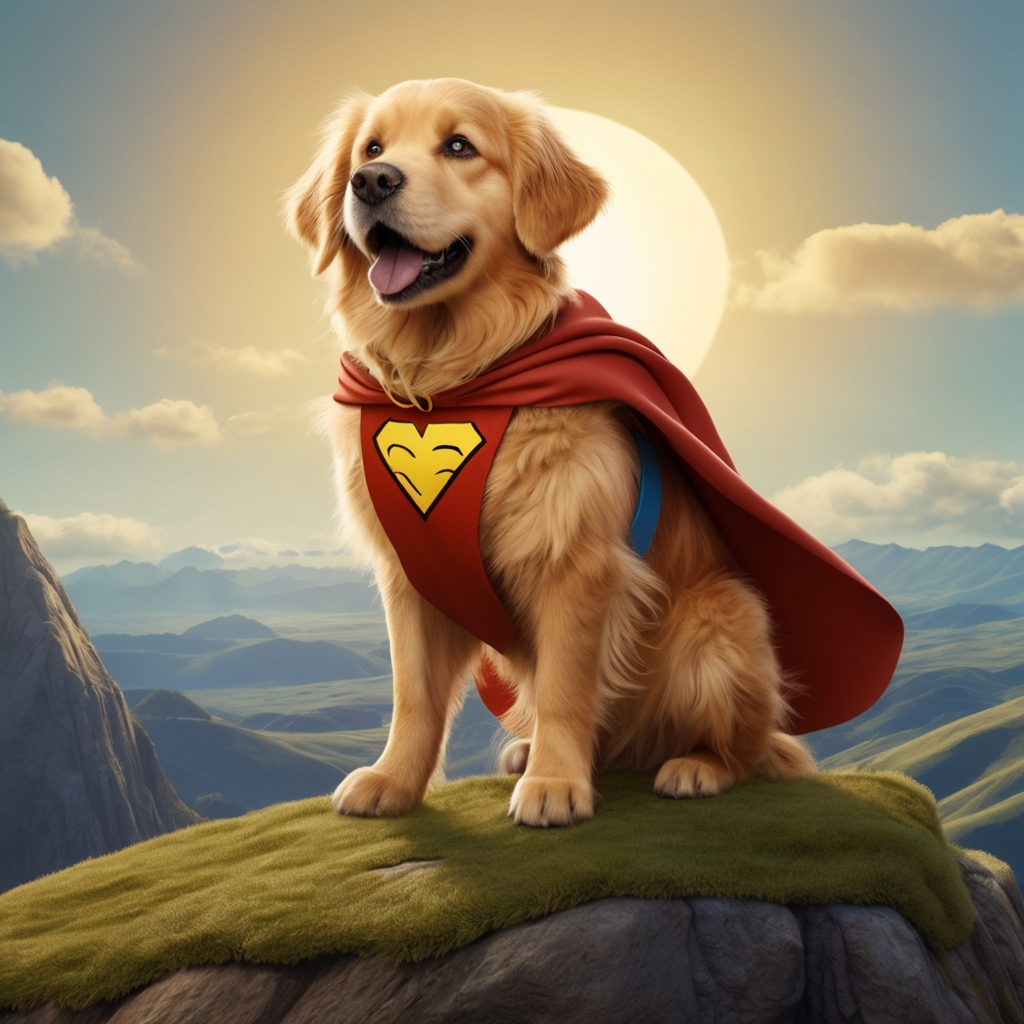 A golden retriever wearing a superhero cape, standing proudly on top of a mountain, in Pixar-style animation by Leonardo AI
A golden retriever wearing a superhero cape, standing proudly on top of a mountain, in Pixar-style animation by Leonardo AI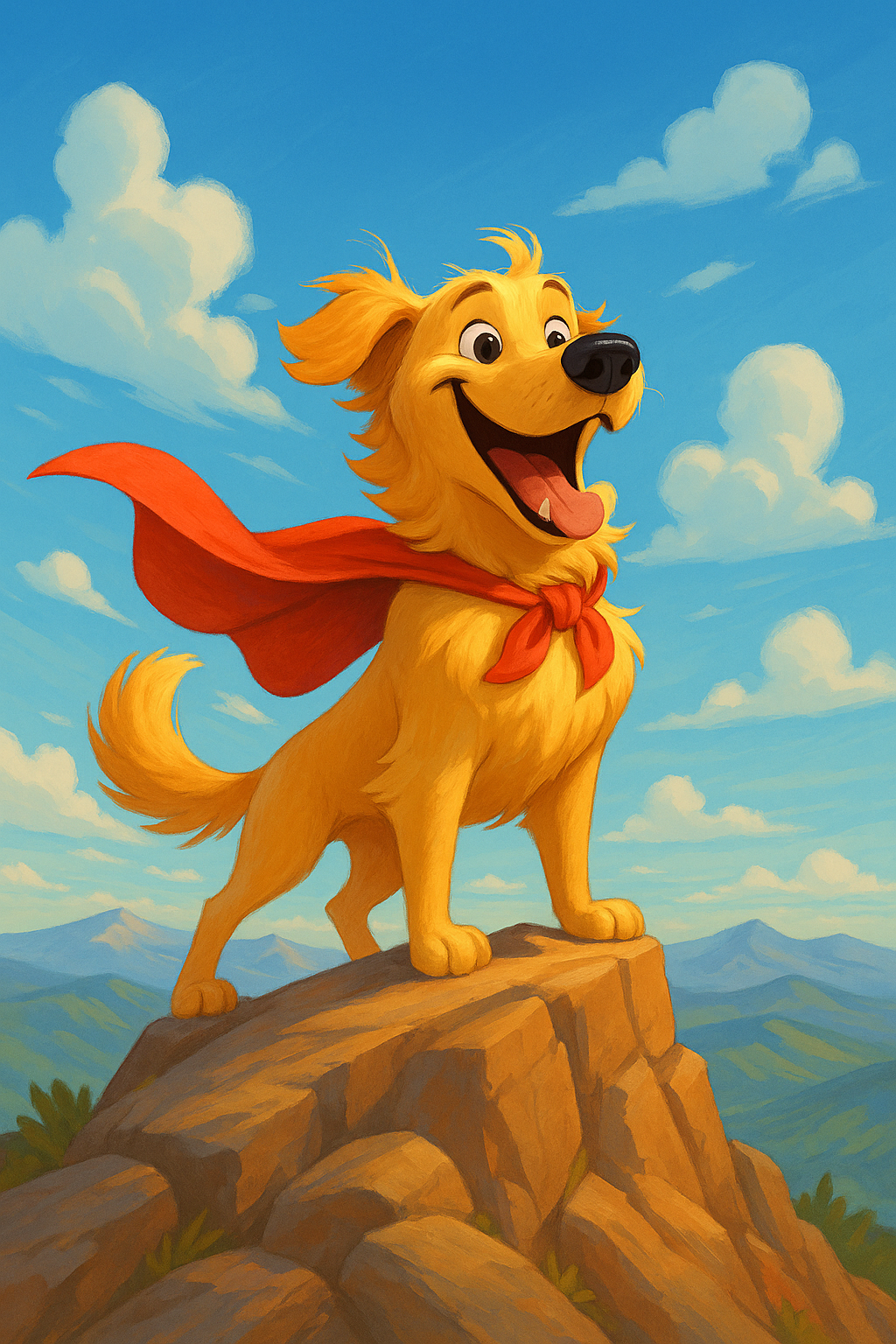 A golden retriever wearing a superhero cape, standing proudly on top of a mountain, in Pixar-style animation by ChatGPT
A golden retriever wearing a superhero cape, standing proudly on top of a mountain, in Pixar-style animation by ChatGPTDo These Look Real to You?
Notice something interesting? The two images above were made with different AI programs—Leonardo AI on the left, ChatGPT on the right. Pretty wild, right? Each tool has its own “art style,” so I often test the same prompt in multiple apps and pick the one that best fits what I’m going for.
The cozy image on the bottom left? That was made with Leonardo AI using the prompt:
"A cat and dog cuddled up in front of a fireplace with a winter scene outside the house."
It’s almost too realistic—Ok, well except for the fire in the fireplace...
And let’s talk progress: Early AI-generated people looked like aliens with extra limbs (true story—I once got a lady with six fingers). But things have seriously improved. The sunny meadow scene on the right? Totally generated by ChatGPT with the simple prompt:
“A person with their dog hanging in a large meadow on a sunny day.”
It looks like a real photo… and best of all, no mutant fingers in sight.
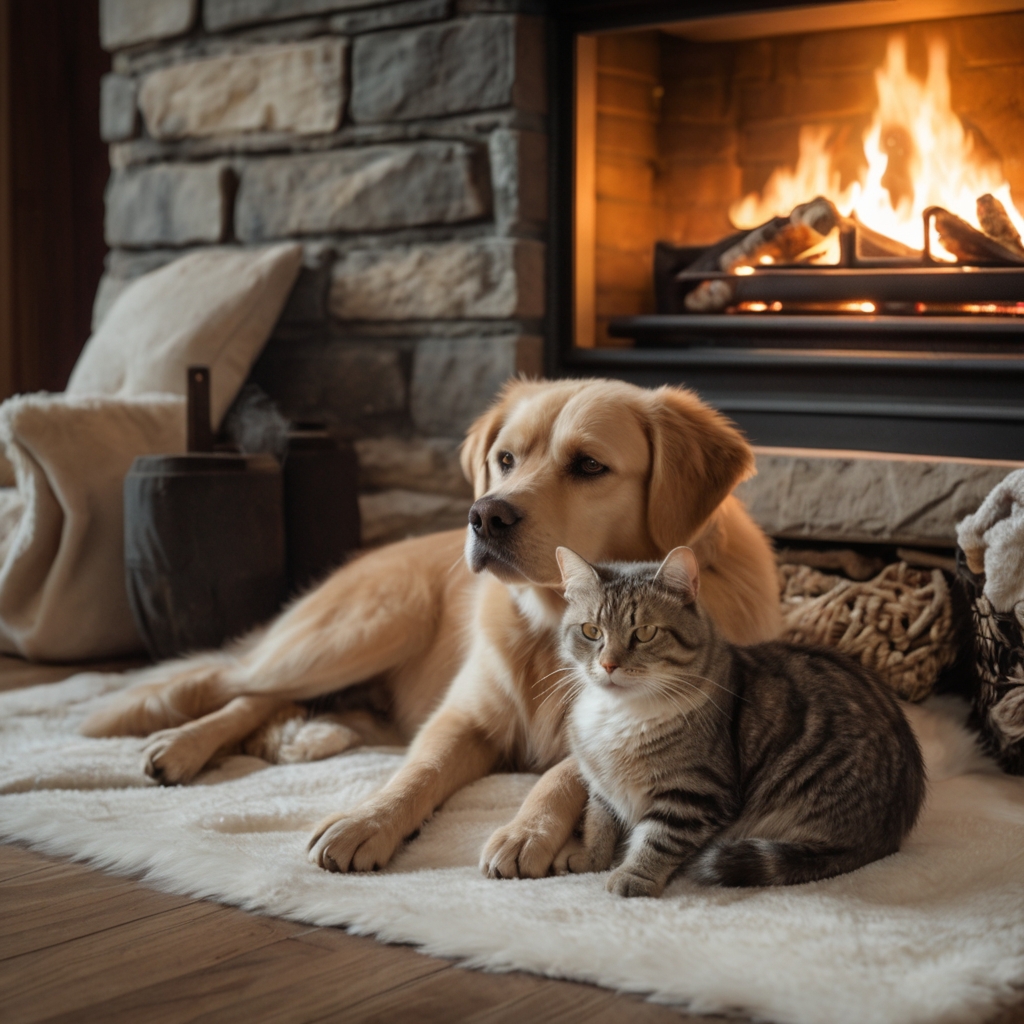
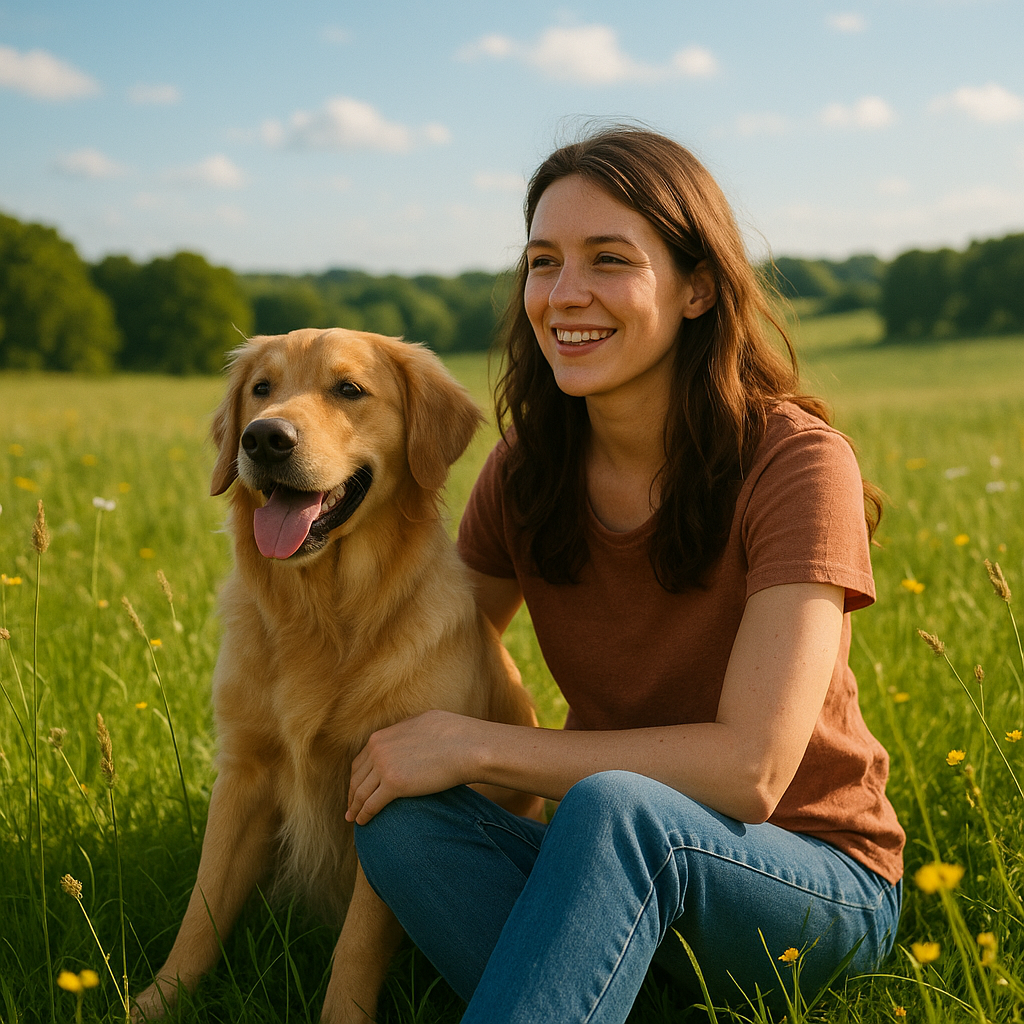
But Is It Real Art?
Well, that’s a hot debate. But here’s the thing—AI image generation isn’t here to replace artists. It’s more like giving you a lightsaber and saying, “Hey, go make something cool.” Whether you’re creating memes, concept art, or just entertaining your inner child, it’s still creativity. The tool just happens to be… really, really smart.
What’s Next?
If you’ve made it this far, congrats—you now officially understand AI that can create images. Whether you're looking to get started, improve your prompts, or dive deeper into advanced tools, you’re in the right place.
Bookmark this page, share it with a friend, or go create your first AI masterpiece. The robots are ready when you are.
Give it a Try. Here's the easiest way to get started just for fun!
1. Go to ChatGPT.
2. In the box, type in your prompt. Not sure what to type? Try something fun like, " A grizzly bear doing stand-up comedy at a forest open mic night."
3. Check out your results and then try another!
Answers to Your Most Burning Questions...
Do I need coding skills to use AI that can generate images?
Do I need coding skills to use AI that can generate images?
Absolutely not! Most popular image generation tools have user-friendly interfaces where you simply type what you want. Type "sunset over mountain lake with reflections" and click generate—that's it!
How long does it take to generate an image with AI?
How long does it take to generate an image with AI?
Typically between 5-30 seconds depending on the tool, the complexity of your prompt, and your subscription level. Free tiers generally have longer wait times during peak usage.
Why do AI-generated images sometimes look weird or have distortions?
Why do AI-generated images sometimes look weird or have distortions?
AI models are still learning! They particularly struggle with human anatomy (especially hands and faces), text rendering, and logical consistency in complex scenes. Each generation is essentially the AI's "best guess" based on its training, so results vary.
Can I edit AI-generated images after they're created?
Can I edit AI-generated images after they're created?
Yes! You can edit AI-generated images in any photo editing software. Some platforms (like Leonardo AI) have built-in editing features, while others require exporting to tools like Photoshop. Many AI platforms now offer "inpainting" or "outpainting" to modify specific parts of generated images.
Can I use AI-generated images for my business/website/social media?
Can I use AI-generated images for my business/website/social media?
Generally yes, but check the specific tool's terms of service. Most paid tiers grant commercial usage rights. Midjourney, and Leonardo AI allow commercial use with active subscriptions, but some have restrictions on high-volume usage or specific industries.
Can AI-generated images be detected?
Can AI-generated images be detected?
Yes, there are increasingly accurate AI detectors that can identify AI-generated images, though they're not perfect. Some telltale signs include unusual textures, symmetry errors, and artifacts in complex areas like hands or text.